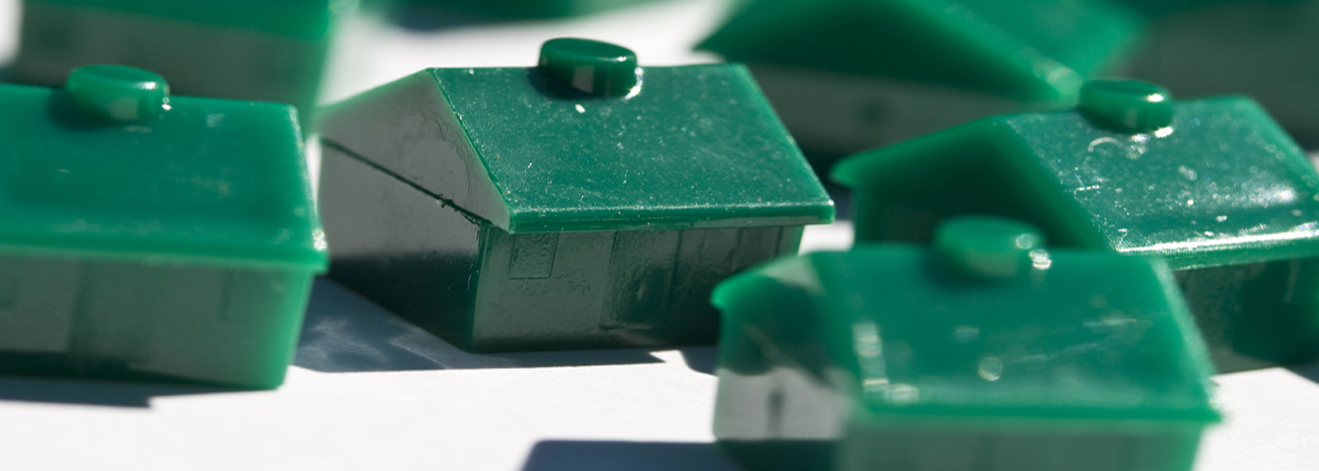Pain Is…Good?
I am often asked about my opinion as to where home and other asset prices are headed. I promise this diatribe will lead to an economic conclusion applicable in today’s world. Where shall I begin?
We live in a generation of pain avoidance. Somewhere along the line, we decided that somehow we could shield ourselves from pain. It honestly started with my own generation. We did everything we could to spare our kids from pain or discomfort. I myself recall ranting to my kid’s teachers about some inequity bestowed upon my child in school. We wiped tears and cleaned the slightest of knee skins. We had nanny’s and gardeners to spare our kids (and u-hum, us) from having to take time from club soccer or volleyball to exercise our discomfort muscle and actually get our hands dirty. Of course a bottle of hand sanitizer was always handy just in case. We made our kids soft. For better or worse, it’s an undeniable truth.
The fictional Gordon Gecko once famously said, “…greed is good…”. While clearly that is preposterous on one level, it is still a natural part of the human psyche. A much more salient and astute statement may have been, “pain is good”. No one likes it, yet it exists for a reason. Pain keeps our hands from resting on hot stoves. Pain keeps us from making the same stupid mistakes over and over. Pain is what turns busts to booms. Greed is what turns that tide. Enter moral hazard.
When I made my debut on Wall Street, the Dow was trading just under 800. Yep, that’s not missing a zero. August 12, 1982 will be indelibly etched in my mind forever. After a decade of massive inflation and plenty of pain, then fed chairman, Paul Volcker began an easing of rates that would continue to this very day. With plenty of fuel to burn, this propelled high single digit GDP gains throughout the sweet spot of the 80s. Despite a rude intermission in 1987, this hyper-growth lasted past the turn of a new millennium. In another venue, I could write reams about that day on the trading desk, but I digress.
Irrational exuberance gave way to, you guessed it, moral hazard! The loose definition of this is the notion that the fed will always be there to save us from, well, another great guess, pain. Why is pain good? Ramped speculation gives way to huge economic imbalances. Our lawmakers as well as the “independent” federal reserve in all their wisdom decided they could spare us the pain. Social and economic engineering are both well intentioned and doomed for failure. From legislation in 1999 to make homes affordable to everyone, to massive bailouts once that didn’t work quite as planned, we have made it a practice of sparing ourselves pain.
For millennia, there have been economic cycles. Like the forest, which cannot sustain without the pain of wildfires, too the economy is destined to booms and busts. The Great Generation was great for a reason. They came of age at a point in history of unmatched economic pain. Yet, what became of them? Did they all lay down and curl up in the fetal position or did they get off their proverbial asses and put their noses to the grindstone to ensure their survival? Humans are much more resilient then we give ourselves credit for. The 1930s was the cornerstone of mental and physical toughness. Patriotism. Hard work for a day’s pay. It cleared the markets of the speculative foolishness of the late 20s and then paved the way for generations of prosperity.
Until, it got too easy. Again. I say again because this is the natural long wave cycle noted by Russian economist Nikolai Kondrateiv (later shot by a firing squad under Stalin). It predates well before the Dutch Tulip bubble in the mid 1600s and likely back to the dawn of civilization. The basic idea is that these major market catastrophes occur about every average lifespan. This is due to the fact the it takes a generation to die off who remember what excess and complacency ultimately lead to. The CLEANSING mechanism once the speculative fever returns just so happens to be, pain. So how does this relate at all to today?
In essence, we put the wildfire out prematurely through impossibly easy monetary policy, massive bailouts for whom many had no business getting. Everyone was culpable yet not many paid. When zero interest rates didn’t work, they took it another step further through “quantitative easing”. In essence, our fed basically bought mortgage bonds to artificially force rates below the market clearing supply and demand level. To put it simply. THEY SPARED US THE PAIN. I seriously doubt we would find ourselves in this insane election we find ourselves in, had we not fooled ourselves into believing we could finally conquer the economic cycle. Well congratulations, we may have done just that. The problem is, 2% growth is not exactly what the fantasy envisioned.
It is said that economists have predicted 9 out of the last 8 recessions. It’s a cheeky way of saying that no one has a crystal ball. Not even the “experts”. While I don’t wish to hold hands with the soothsayers, I do feel this has to play out in one of 3 ways. Either the false hail Mary forever cured us of long term pain, or….ok forget that one. Let’s say there are 2 ways this likely plays out. The deficits that were a necessary tool in shielding us from the last wildfire,( the one that could have given birth to a GREATER generation) have consequences.
The first scenario is that of the fate, yet to be fully played out in Greece and most of the EU. That is, a day of reckoning that brings on massive deflation. A depression that would make the 1930s look like a gentle squall. For those who aren’t paying attention, this is already playing out in Europe, as they continue to defer their pain. The second scenario which I believe we are smack dab in the middle of is that of accrued pain. That is several decades of poor job growth, weak GDP in the 0-maybe 3% range on a good year. The best way to understand this is to take the real pain that should have lasted 3-5 years and spread it over decades. Another way to understand it is, well, Japan.
Okay, so what does this mean for our future? Going back on my word not to make predictions, here goes. No matter who is president, no matter what these geniuses do, we have a price to pay. The big party is behind us. We have enjoyed a boom in asset prices due to the massive liquidity created by money printing. We will continue to monetize our debt. No matter what armchair quarterbacks are telling you, interest rates have nowhere to go but…….remain where they are. The fed is in a box. They indicate tightening under huge criticism for letting things get this out of hand. However, this is a symbolic gesture. They know that if they raise rates, they will endanger the already weak and deflationary environment. They will raise 1 more time this year. You can go back to last year to see that I predicted no more than 2 rate hikes this year. Higher rates would mean a still higher dollar since we are the best house in a very bad neighborhood. Exports, which are already pathetic, would decline further. Protectionism would ensue, which is already starting to play out. They can’t raise and they can’t NOT raise. Quagmire. So the aforementioned party is due its hangover. Instead of getting it over with, we decided to keep drinking the Kool-aid until it claims what it deserves. Maybe there is a day of reckoning. Maybe not.. Maybe we just take a 5 year hangover and spread it out over 30 years. The latter is my personal view, but at some point the piper gets paid either way. Grandpa say sorry kids.
So how do we invest in this unparalleled climate? Do we run to cash as so many have as if cash is somehow the dugout in a tie game and there is no risk? If your team is down 2-0, staying in the dugout is not going to win the game. Cash is nothing but another asset. It’s a bad one too. With inflation running at an albeit tepid 2% or so, cash earns zero. Better put, cash returns negative 2% per year as of late. Stocks and real estate have lost some of their momentum. It doesn’t mean crash. It means, the stimulus is disappearing for the time being and assets are taking a break. Metals are on fire. Some think this is a predictor of inflation. I don’t think so. It may support a mirage of rising assets prices, but real inflation, the kind made of wage push and an overheating economy is laughable. One thing you can bet on, our government will continue to both create and spend more money. This “stimulus” can keep it going, but has lost the punch of the mid 80s and will likely continue to do so.
We can’t live our lives in fear of the next doomsday. Most of my counterparts that went bust over my finance career did so because they thought they were smart enough to predict the end of the race and were perpetually predicting market tops. Wrongly. Costly. We have to go on. Optimism is good. Pain is good! The pain we were denied post 2009 is just playing out in different ways. A divided country. Divided races. Unstable world affairs Worse income gap, despite attempts to bury Adam Smith and engineer our way out. Loath a finance, real estate guy saying this, but maybe we just need to accept low returns and focus on something other than things. This may be a cleansing yet. Sometimes painful, but as humans have in the past, we too will overcome our mistakes.
So in conclusion, keep a well diversified portfolio of real estate, stocks, metals, bonds and you will do just fine. I believe in quality. Own quality real estate. Observe demographics. We live in the best there is. Own great companies. Own AAA bonds. Don’t be tempted to chase the allure of “high return” risky assets. I am not one to say this lightly as I have lived my life with a disproportional degree of risk taking both financially and physically (I have broken most of the bones in my body engaging in extreme sports), but it’s time to play defense. Play it safe. You cannot “hide” in cash as so many Americans are doing. It is just another bucket in a field of many and you are hiding behind your hands. There is really no “hiding” from consequences is there? Who knows, maybe we will wring out a new “great generation”. It may just take a little longer than we planned.








